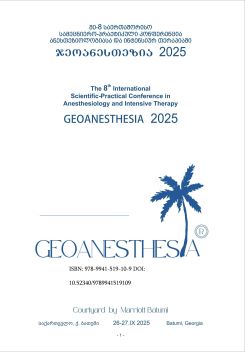Adenosinic and Cholinergic Stimulation Decreased Memory Complications after Synthetic Cannabinoid Exposure
DOI:
https://doi.org/10.52340/9789941519109.14Abstract
Introduction: Consumption of illicit synthetic cannabinoids in smoking mixtures has exceeded that of other drugs of abuse in the Russian Federation. Poisonings by synthetic JWH compounds may cause life-threatening complications and severe memory disability the in post-intoxication period. Aim. To determine the efficacy of the pharmacological combination of the adenosine-mimic agent Cytoflavin (Inosine + Nicotinamide + Riboflavin + Succinic Acid) and the cholinergic enhancer choline alfoscerate towards the adrenergic toxidrome and memory function after acute JWH exposure. Study design. 26 patients (16 – 30 y.o) with abnormal behavior, severely poisoned with JWH admitted by ambulance team to SPB and Omsk City Emergency Units (EU), randomly divided into 2 groups. Both groups received IV detox treatment for 3 days (saline, electrolytes, benzodiazepines, according to the guidelines). The Intervention Group additionally received Cytoflavin 30 cc/70kg b.w, IV in D5W, and choline alfoscerate 2g IV, BID, for 3 days of stay in the EU. Measurements: Vital signs: heart rate/HR, blood pressure/BP, level of consciousness (by GCS), severity of psychosis (Pousada & Osborn Scale, 1986), and routine labs were recoded. The Montreal Cognitive Assessment (MoCA) test was performed on the 3d day of stay in the EU (discharge date), and on 15±4 days after JWH exposure, by active call. Patients with skull trauma, bleeding, blood ethanol levels >1‰, and anticholinergics detected in urine, were excluded, as well as the other patients as well as patients who tested positive for delta-9 THC. Toxscreen was done by test-strips (Creative MP-K2/spice), and GC-MS «Agilent Technologies 7890 В GC system» in urine and pipes of smoked tobacco products. Statistics were done using Wilcoxon “U” criteria (p=0,05). Results. On arrival 26,9% (7 patients) were soporific (GCS 9,9±0,5), 21 patients experienced adrenergic toxidrome with pareidolias, panic, and psychotic episodes (+3 by Osborn Scale) on the 1st and 2nd day in EU. Movement disorders were recorded in 6 patients (28%). Daily diazepam dose was 40,7±7,09 mg (1st day), and 20,6± 5 mg (3d day). On the 3nd day, the the Intervention Group displayed a stabilisation of conscioussness, BP, and HR that exceeded that of controls. No inter-group differences in MoCa test were recorded on the 3d day of stay in EU (p>0,05). However, on the 15±4 days post admission, MoCa test was 23,5 (intervention group) vs 18,2 (controls), p<0,01. Conclusions. Cytoflavin and choline alfoscerate ameliorate memory impairment in the post-intoxication period after acute synthetic spice exposure.
References
Pousada L, Osborn H. Emergency Medicine for the House Officer. Williams &Wilkins Copyright©, 1986, p.183., 2. Temerdiev A.Z., Kiseleva I.A. GC-MS detection of natural and synthetic narcotics, derivatives of N-alkyl-3-indolilketones, alfa-aminoarylketones, ή-amynobenzoic acides, cannabinoids, and tropan alkaloids. Analytic and Control; 2012(16):240 – 247.





